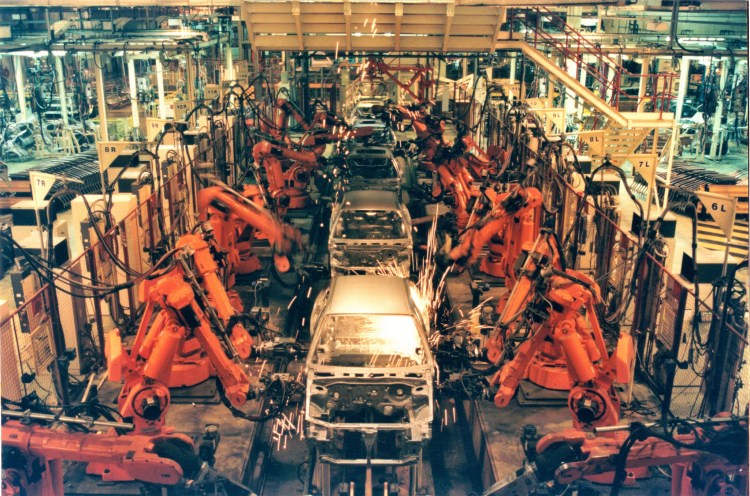The next wave of innovation about to wash over the connected world is the industrial Internet of Things (IoT). Beyond smart watches and FitBits, forward-thinking businesses are applying the concept of IoT to complex, psychical machinery, like jet engines and locomotives, to unleash unexpected growth opportunities and fuel innovation. Combined with data analytics, companies can leverage the industrial IoT to impact the economy, the job market and the future; and it has the potential to add $15 trillion to the global economy in 2030, according to Accenture.
While we’re seeing companies lean into the industrial IoT, platforms are still in the early stages of maturity. Executives will have to carefully choose and manage their platforms, explore the technical challenges, identify gaps in information sharing and interoperability, and work with their company’s closest partners to bridge them.
Reversing the flow of technology adoption
The flow of technology adoption is reversing — as is the case with connected devices. Historically, businesses have sat in the driver seat of technological innovation and driven the adoption of new technologies. Following the old model, BlackBerry phones were created as a device architected around the needs of large corporations and slowly consumers began to adopt them as well.
The roles have reversed. Now consumers are bypassing companies, as they become faster to integrate new technologies into their lives and companies are working fast to play catch up. The first iteration of the IoT saw users quickly adopting wearable devices to track everything from nutritional intake and sleep patterns to calories burned and steps taken. Following suit, businesses began to look at how they could use data from connected sensors to optimize how they functioned.
Now they are taking this a step further and applying these insights to bigger machines equipped with data-gathering sensors. This new movement, the industrial IoT, is accelerating the connection of objects with humans and also with other objects to reveal deep insights.
Big machines and big insights can transform industries
The most prevalent applications of the industrial IoT are to boost revenues by improving operational efficiency, create hybrid business models with new sources of revenue, and spur innovation.
In the manufacturing industry, we’re seeing connected devices open up new ways of data sharing that were not previously possible. Now, small sensors on pieces of complex machinery can emit data about performance status that can then be used to adjust scheduled maintenance. With this data, teams can predict maintenance failures, proactively prevent them and ultimately reduce down time. This approach has also been applied to resource allocation and energy management. Equipped with sensors on onshore and offshore oil pumps, companies can minimize lost production and save massive amounts of money.
While we’re seeing the industrial IoT take shape in areas such as manufacturing, it has the potential to touch more industries. Recent technologies including Hadoop, data analytics, cloud computing, and visualization, offer a path to big data insights.
The challenges to realizing the full potential of the industrial IoT are not necessarily shortcomings in the available technology but in creative thinking. Businesses need to take a few notes from the early adopters of the connected movement — consumers — and see how they can creatively put the industrial IoT to work to solve industry problems in big ways.
Stefan Groschupf is chief executive of Datameer.


